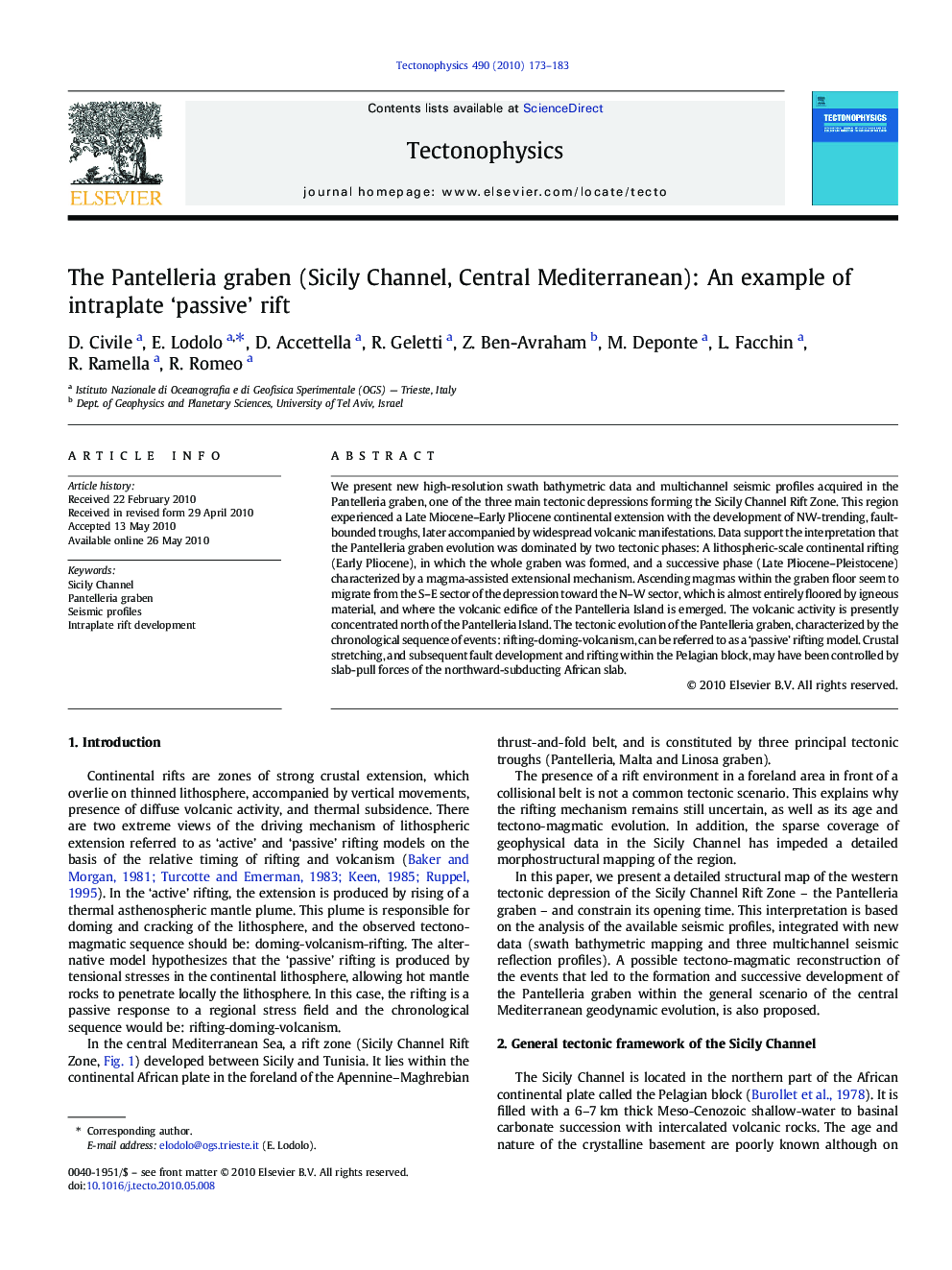| Article ID | Journal | Published Year | Pages | File Type |
|---|---|---|---|---|
| 4693451 | Tectonophysics | 2010 | 11 Pages |
We present new high-resolution swath bathymetric data and multichannel seismic profiles acquired in the Pantelleria graben, one of the three main tectonic depressions forming the Sicily Channel Rift Zone. This region experienced a Late Miocene–Early Pliocene continental extension with the development of NW-trending, fault-bounded troughs, later accompanied by widespread volcanic manifestations. Data support the interpretation that the Pantelleria graben evolution was dominated by two tectonic phases: A lithospheric-scale continental rifting (Early Pliocene), in which the whole graben was formed, and a successive phase (Late Pliocene–Pleistocene) characterized by a magma-assisted extensional mechanism. Ascending magmas within the graben floor seem to migrate from the S–E sector of the depression toward the N–W sector, which is almost entirely floored by igneous material, and where the volcanic edifice of the Pantelleria Island is emerged. The volcanic activity is presently concentrated north of the Pantelleria Island. The tectonic evolution of the Pantelleria graben, characterized by the chronological sequence of events: rifting-doming-volcanism, can be referred to as a ‘passive’ rifting model. Crustal stretching, and subsequent fault development and rifting within the Pelagian block, may have been controlled by slab-pull forces of the northward-subducting African slab.
